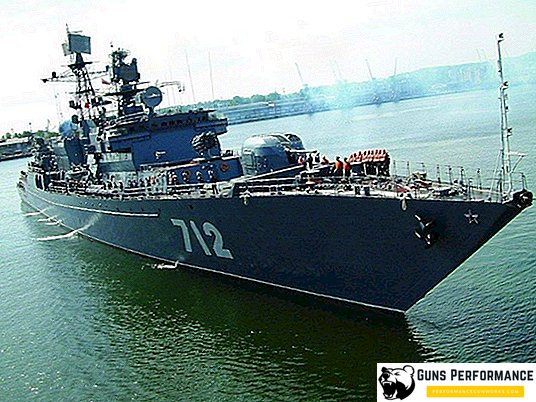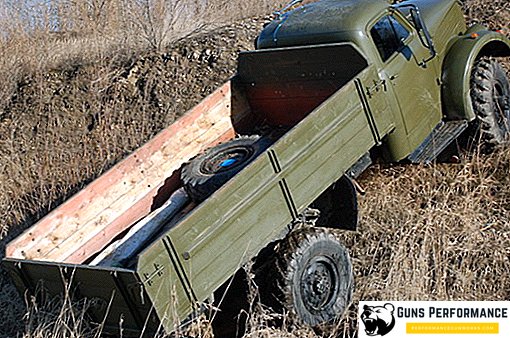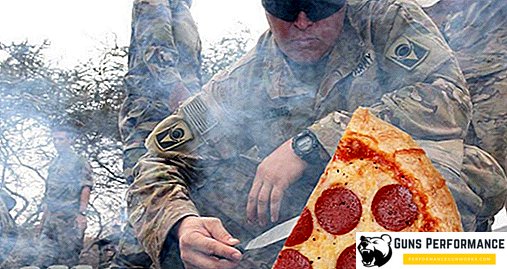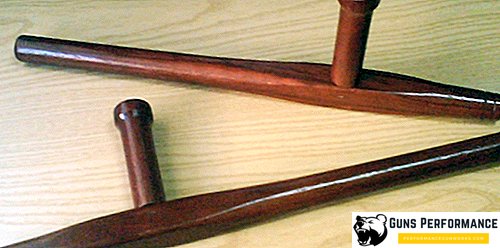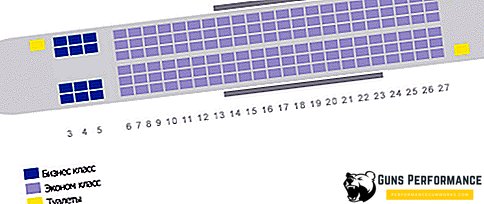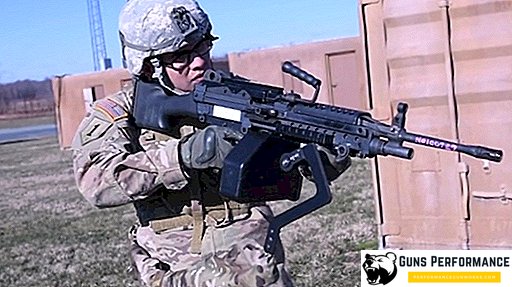Shooting a firearm requires careful preparation in the details. Do not forget that even the most upscale shooter is not immune from ricochets, loose shells, specks, powder smoke and other surprises. Although many shooters do not accept the use of helmets and headphones, ballistic glasses are needed without fail. They are not a fashionable attribute, but testify to the professionalism of an athlete who values his health. Shooting points are used in airsoft and hardball, without them, no serious team will put their participants to the competition.
Some believe that tactical and ballistic glasses are different types. In fact, the concept of "tactical" is very vague. These models include protective, military, construction, airsoft and other glasses. Speaking "tactical", they usually mean ballistic models intended for shooting.
The history of the appearance of ballistic points
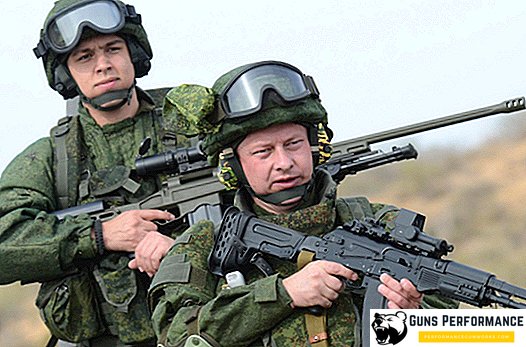
A prototype for tactical and even anti-splinter glasses models was equipment for ensuring labor safety in industrial enterprises. Chronology of creating data points:
- The end of the XIX century - the invention of the first protective devices with translucent pieces of cloth;
- The beginning of the 20th century - numerous attempts by the British to create ballistic glasses, gluing a pair of lenses together, adding to them cellulose-based nitrate;
- 1914 - the first models with the technology of protective lamination, invented in the United States of America. The novelty was used in the army to create glasses of gas masks and lenses of flight helmets;
- Since the 1920s, new technologies have been used in construction: special modifications of masks for welders. Despite the efforts of manufacturers, accessories often could not withstand the loads and cracked at the most inopportune moment;
- In the 1960s, polycarbonate appeared, which made it possible to move to a new level of ballistic glasses production.
For the first time, citizens of the Soviet Union saw tactical glasses at the heroes of American militants in the late 1980s. In the early 1990s, such accessories began to appear on the faces of domestic security officials, attracting increased attention with their shape and unusual color (often yellow or mirror).
Characteristics of the models improved from year to year, new features and protection classes were added, emphasis was placed not only on development, but also on price reduction, which led to their widespread adoption.
Types of optics to protect your eyes from shards

Most of the ballistic glasses, designed for shooters, are made of transparent polycarbonate, often with a yellow or smoky shade, now Cerakote coating is popular in the US Army. For shooters with vision problems, it is possible to purchase models with diopters. The main types of optics for protecting eyes:
- Open;
- Glasses-mask.
Open models are not too different from ordinary sunglasses, except that they can withstand strong blows. Externally, they can be recognized by the shape of the lenses stretched to the temples. This modification is used for shooting competitions in open areas, as it does not protect against side hits. Replacement lenses are often supplied with a set of ballistic glasses for different weather conditions.
Closed models are called glasses-masks, they have one continuous lens, fixed with a frame made of rubber or elastic plastic. Instead of bows, a wide belt of elastic materials is used here. Models for military units of the troops can be made not only from high-impact polycarbonate, but also from metal mesh. Mask glasses protect the shooter’s eyes from all sides, they can be actively moved, jumped and crawled, so they are often called tactical. The US Marine Corps uses just such models, although they are highly durable and are sold in the civilian market as anti-shatter.
When buying closed models, you need to pay attention to ventilation, since cheap glasses tightly clutching their faces make it difficult to change air, and sweat begins to fill their eyes, and the lenses mist over. Branded modifications from well-known manufacturers have several solutions to the problem with ventilation:
- Special vents;
- Installing a lattice lens;
- Forced ventilation device.
Each of these solutions has advantages and disadvantages. The cheapest model with holes, although this somewhat reduces the level of eye protection, and they do not work as effectively as we would like. Lattice lenses are well ventilated, but they are not suitable for airsoft, since fragments of a crashed ball can fall into the holes between the cells.
The most effective are glasses with forced ventilation, carried out by ordinary electric motors running on batteries or batteries. Their disadvantages: dependence on electrical power sources and high cost.
Selection of lenses, light filters and diopters

The color of the lenses for tactical glasses depends on the conditions of use of this element of protective gear, you should not think that they are made of simple glass and painted to give an external effect. Each color has its advantages:
- Transparent lenses are used in cloudy weather, in bright sunlight they can glare, blinding the shooters and unmasking at the same time;
- Smoky lenses reduce glare, but their light transmittance is less. They are used in the sun, near water bodies and in winter in snowy areas;
- Yellow lenses increase sharpness than professional photographers have long enjoyed. In tactical glasses with yellow light filters, all distant objects acquire a delineated appearance;
- Green lenses can slightly shade bright images and glare, in addition, the human eye is better at distinguishing the green part of the visible spectrum, so even small details can be considered in such glasses.
Some novice athletes are suspicious of polycarbonate lenses, believing that nothing can be better than glass. In fact, modern high-impact plastic is not inferior to glass in its characteristics, so you can even order models with diopters.
For the storage of tactical glasses used special hard covers and cases, protecting the lens from scratches and damage.
Application and standards of various models

Tactical glasses are not a stylish accessory that any Chinese company can produce. This is a protective gear used in those conditions where it is really necessary. They are divided by the level of protection:
- Working glasses can be easily stretched to a lower price category, since some of them follow the shape of popular models and serve to protect the eyes when working in production;
- Ballistic glasses are used most often at shooting ranges and protect the eyes from accidental damage;
- Tactical glasses are necessary to protect against some deliberate effects;
- Anti-splinter models are among the most durable.
Working glasses are used at shooting ranges only in extreme cases when it is not possible to find a more effective protection. They can protect the eyes from powder gases, dust, chips, scale, and so on. Polycarbonate on these models is not able to withstand even a ball released from an airsoft pistol.
Most of the splinterproof glasses, which can be chosen in the lineup of popular manufacturers, will protect eyes even from small fragments of grenades, not to mention airsoft and hardball balls. Such models are very reliable, although their price is high. Quality standards for strength determination:
- GOST R 12.4.013-97 is used for working models used in construction or production. The lens withstands the fall of a steel ball weighing 100 grams from a height of 60 cm;
- EN 166 is a European quality standard for ballistic glasses. The lens is not afraid of a steel ball with a diameter of 6.25 cm, flying at a speed of 45 m / s. To make it clearer, a 4.5 mm ball, released from a conventional air pistol, flies at a speed of 110-120 m / s. Such models are not recommended for use even for airsoft;
- ANSI Z87.1-2003 civilian standard airsoft tactical points. The lens does not crack after hitting a steel ball 6.4 mm, the speed of which reaches 100 m / s;
- MIL-PRF-31013 - military standard for tactical models. Does not crack from hitting a cylinder made of steel weighing 0.37 grams and with a diameter of 3.8 mm. Serious protection against rebound;
- MIL-DTL-43511D is a standard for mask glasses, whose lens is able to withstand a direct hit by a 22 caliber bullet or a small grenade shard.
You should not try to find the most expensive military models with built-in ventilation and filtration systems, they are not useful in everyday life, and they are too expensive for airsoft.
Most popular manufacturers and models

Before choosing tactical points, you need to carefully study the best models of manufacturers on the domestic market of protective equipment:
- Oakley - a company from the United States, a well-known manufacturer of tactical glasses and protective gear. The model range is extremely wide and varied both in terms of design and prices. All models of optics are suitable for airsoft because they belong to the standard ANSI Z87.1-2003. Currently tinted or painted glasses with different light filters are produced, there are models with stainless steel frames, with or without handles;
- Revision Eyewear is a Canadian company that has become popular due to the Revision Sawfly model. It has one wide lens and rubberized folding arms. The lens is replaceable and can be replaced with a smoky, green or yellow. The glasses meet the standards of ANSI Z87.1-2003. Officially supplied to the armed forces of Canada, USA, UK and Germany;
- Daisy is another brand from North America, where it is very popular due to the optimal combination of price and quality. Products of this company are often bought by fans of extreme sports and cyclists, especially models C4 and C5. Included with glasses are several types of interchangeable lenses located in their own frame, so they change in a couple of minutes. Handles are unregulated, there is a mount in the form of an occipital strap. As an addition to many models, soft and hard covers are offered;
- Bolle is a French company producing a wide range of optical devices, its range includes a huge number of different types of glasses, including sun glasses, sports and others. Tactical models produced division Bolle Tactical. Points of this company from high-strength polycarbonate 3 mm thick. Frames are made of plastic, equipped with bows and passive ventilation. In the basic configuration are offered with lenses of green, sand or black color, for an additional fee you can buy interchangeable transparent, smoky or yellow lenses. There are options with double thickness polycarbonate. Most Bolle Tactical tactical glasses are made according to the MIL-PRF-31013 standard, and they are used in the French army and police;
- Rudy Project is an Italian manufacturer that produces models that comply with EN 166 standards. Points from this company are distinguished by a wide range of interchangeable lenses - there are 3 groups, each of which has 7 shades. The ventilation is interesting in these models - the lenses can be inserted into the frame with gaps;
- ESS Crossbow is an American company that equips an army with necessary equipment. Ballistic glasses of this brand are worn at the request of the field regulations of the US Army, comply with the international standard ANSI Z87.1-2003. The main feature of the ESS Crossbow models is the use of aspherical lenses that reduce optical distortion. To protect against minor scratches manufacturer applies a special coating. In the configuration there are several interchangeable lenses and a neck strap. Handles points are thin, but durable, they do not interfere with wearing special headsets, hats and helmets;
- Smith Optics is a North American firm producing protective ballistic glasses. Their feature is the method of attaching lenses - they are inserted with the top edge into the frame. The glasses are equipped with thin adjustable arms that do not interfere with the wearing of helmets, and an occipital strap. The main disadvantage of the models of this company is the vulnerability of the temples arrow;
- Gletcher - one of the most famous manufacturers of pneumatic and airsoft weapons in the world, produces a wide range of protective equipment, including tactical glasses. All products of this brand meet the requirements of the standard ANSI Z87.1-2003. Models are affordable, have a thin unregulated frame and only transparent lenses. In the kit there is always a soft case made of suede and a lens cleaning cloth.
It is not recommended to buy tactical glasses of unknown manufacturers, they are even worse than construction models in quality, and will crash on the first hit of the ball, causing irreparable harm to human health.


